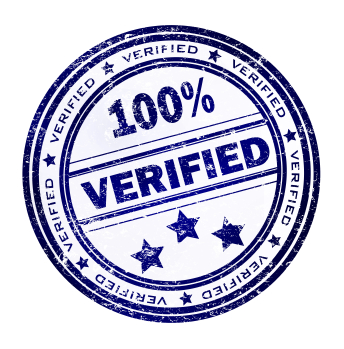In many courtrooms all across the United States today, a state analyst opines under oath that a unknown leafy green vegetable like substance is in fact marijuana. The question becomes, in the typical case, is this a valid conclusion? Is it the whole scientific truth?
In this series of posts we are going to examine these seemly simple questions:
- What is the goal and the purpose of testing of unknowns generally? How do we best design a test for marijuana?
- How is most marijuana testing conducted in the United States?
- What is microscopic morphological examination? Is it a “good” test?
- What is the modified Duquenois-Levine test? Is it a “good” test?
- What is Thin Layer Chromatography? Is it a “good” test?
- Is the combination of all three tests create a “good” testing scheme?
- Is there a better way to test for marijuana?
Part 1: What is the goal and the purpose of testing of unknowns generally? How do we best design a test for marijuana?
Remember that the goal of all analytical testing is to produce a valid result. A valid result is the epitome of good science.
A valid result is made up of three distinct features:
- It is a specific measurement,
- using a technique or series of techniques that are part of a validated procedure
- that is verifiable.
Features of a specific test
The first step is that the testing must be unique and specific qualitative measurement. The difference between specificity and selectivity is very important. To be specific in terms of qualitative measurement means that there is an identification of a particular compound and exclusively that one specific compound to the exclusion of every other compound or substance in the universe. It is unequivocal identification based upon objective criterion and validated methods or techniques that are verifiable. In short, it is what it is and could be nothing else.
On the other hand, if the identification is selective, then it is not specific. The identification that results from selective testing or methods means that it could be that substance but it also could be something else. There could be cross-reactivity, co-elution or just poor sensitivity. There could be false positives. In essence and fundamentally, we do not know what it is definitively, uniquely, and specifically. We may not know what it is, but we can learn what it is not.
Generally, the difference between a specific testing regime and that of a selective one is the difference between confirmatory data and presumptive data and the difference between the scientific weight of the opinions expressed based upon them. A presumptive test is something that is characterized by a high rate of false positives and cross-reactivity. It is not at all specific and may or may not be usefully selective. A confirmatory test is one that results in a near specific measurement with a very, very low rate of false positives. A confirmatory test or even a combination of confirmatory tests can never be truly 100% correct. There is still room for error. Nothing is perfect.

The International Union of Pure and Applied Chemistry (IUPAC), which is the world authority on chemical nomenclature, terminology, standardized methods for measurement, atomic weights and other critically evaluated data and others have defined the difference between these often confused terms as follows:
A specific reaction or test is one that occurs only with the substance of interest, while a selective reaction or test is one that can occur with other substances but exhibits a degree of preference for the substance of interest. Few reactions are specific, but many “exhibit selectivity”.
Other common definitions include:
Selectivity gives an indication of how strongly the result is affected by other components in the sample.
and also
Selectivity refers to the extent to which the method can be used to determine particular analytes in mixtures or matrices without interferences from other components of similar behavior.
A selective test may be not a specific test due to cross-reactivity, interference, coelution, or codetermination.
Features of a validated technique or series of techniques
We wrote a whole 6 part series on method validation and what it takes to be valid result.
- Part 1: Introduction-Is it valid, invalid or non-validated?
- Part 2: What is method validation?
- Part 3: Can we use someone else’s validated method?
- Part 4: What triggers verification, re-validation or out right new validation of a method?
- Part 5: What are the essential terms in method validation?
- Part 6: What is quality assurance and quality control?
Features of a verifiable test
A verifiable test is one in which others who were not present for the testing can look at something to basically double check what testing was preformed and its result. Without verification, then there cannot be a validated result.
 The end result in the courtroom
The end result in the courtroom
If we, as a society, sincerely mean the principles of the presumption of innocence, proof beyond a reasonable doubt, and the burden of production and persuasion, then in the case of identification of an unknown when it is presented in court and if the government can only prove selectivity, then the jury’s result should always be not guilty.


